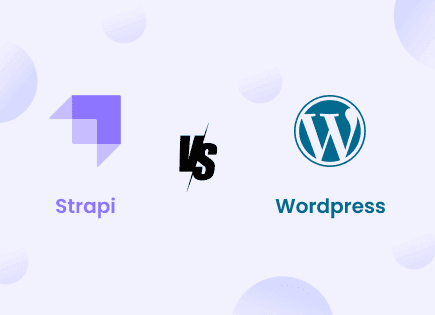Table of Content
Top 17 Future Programming Languages 2025-2030
Table of Content
 Over the past decade, our computing capabilities have improved radically and coding languages have evolved at the same pace. So, new languages periodically threaten to upend the programming landscape.
Over the past decade, our computing capabilities have improved radically and coding languages have evolved at the same pace. So, new languages periodically threaten to upend the programming landscape.
To determine which languages hold the most transformative potential, we have analyzed several developer surveys, consulted programming pioneers and spoken with the creators of various languages.
In this blog post, we’ll examine some of the future programming languages that have emerged at the top of the coding pyramid.
So, whether you’re a rookie coder or a veteran looking to stay ahead of the curve, we’re sure our list has something in store for you.
Read on and find out which future programming languages 2025 will need you to speak!
Future Programming Languages for 2025

1. Python | The Performance-Oriented Language
Python is a high-level programming language that was first released in 1991. It is one of the easiest languages to learn: achieving proficiency in Python is only a matter of weeks. It is also easy to understand because most of its code reads like English sentences.
Nearly 50% of all coders use Python, making it the third most popular coding language. Today, there are more than 8 million Python developers, 40% of whom are in the 21-29 age group. So, not only is Python popular, but its usage is also growing!
Current Usage and Future Potential
Building operating systems and managing large projects,
Game development through libraries like PyGame and Pycap,
Web development through frameworks like Django and Pyramid.
Additionally, Python is a high-level and open-source language. When combined with its complex software development capabilities, it is ideal for:
Scientific Computing
AI and Machine Learning
Enterprise and Business Development
So, while Python may be an ancient script by our standards, it is one of the most versatile programming languages and can power diverse technologies.
Popular Companies Using Python
Facebook
DropBox
YouTube
2. Swift | iOS Programming Language
Developed for Apple in 2014, iOS is now managed by the open-source community. It can be used to create apps for Linux, Apple and Windows platforms. Swift is also one of the new programming languages that have become popular in the past decade.
Swift’s latest iteration improves its concurrency and allows full data isolation to eliminate data races. It is also a multi-paradigm language but prioritizes protocol and object orientation.
While only 5% of programmers use Swift, the language is relatively young and holds a lot of promise for Apple-centric app development
Current Usage and Future Applications
Swift is an intuitive language that is easy to learn and understand. These features make it ideal for:
iOS app development and maintenance,
Web and Internet development,
Multi-platform integration across Apple devices.
Swift’s features imply that it will have several future applications, including:
Applications Requiring Concurrency
Data Science and AI
Cross-Platform Development
Popular Companies Using Swift
Lyft
Apple
Facebook and LinkedIn
3. Java | High-level programming language
Java is a highly popular high-level performance language. It offers even more low-level functionality than C or C++. It is a truly multi-paradigm language, offering object, functional, reflective, imperative and concurrency orientations. It has dominated all lists of top programming languages for over thirty years.
More than 30% of all coders and programmers use Java, making it the seventh most widely used programming language. The number of users of Java 17, its latest iteration, grew by over 400% in just one year!
Current Usage and Future Potential
Due to platform independence, low-level functionality and high performance, Java is used for:
Building rich graphic interfaces used for game development,
Create and run smartphone applications for Android devices,
Business solutions and enterprise development.
Its future potential lies in areas like:
Big Data Development
Embedded Systems
Client-Facing AI Solutions
Java also offers its users interactivity, ease of debugging and standard widgets. This makes it the best choice for programming client-facing AI tools and applications.
Popular Companies Using Java
LinkedIn
Java
Spotify
You May Also Like: Java vs Python for Web Development
4. R | The Data Scientist’s Favorite
Created in 1993, R is primarily used for data visualization and statistical computation.
R is an open-source language that is compatible with C++, Python and Java. It can also easily be used with other database management systems for statistical and data analysis.
Although it is only used by around 4% of all developers, it has a cult following among data scientists, academics and statisticians, making it one of the best future programming languages.
Current Applications and Future Usage
R is a versatile language whose code can run on any device or operating system. Due to this, it’s currently used for:
Statistical analysis in fields like bioinformatics and social sciences,
Data visualization through appealing and vivid graphs,
Creating credit risk models and conducting risk analysis.
Further, its versatility, compatibility and useful packages make R ideal for future applications in:
Data Science
Machine Learning
Predictive Reasoning
Healthcare, finance and supply chain management are just some of the industries that rely on predictive modeling to gauge demand and prepare for the future. R is extremely useful for studying, spotting and predicting emerging trends, making it ideal for these industries.
So, if you’ve been wondering which programming language is best for future applications, start learning R right away!
Popular Companies Using R
Delloite Consulting
HCL
Accenture
Is your web app built with outdated technologies?
Let us help you upgrade to the latest tools and tech, ensuring your app stays fast, secure, and scalable for the future.
Consult with us
Programming Languages of the Future 2027
1. C++ | The Programming Pioneer
C++, created in 1985 by the computer science prodigy Bjarne Stroustrup, is a robust programming language with object-oriented, generic and functional features.
C++’s main advantage is that it is a low-level control language that interacts directly with hardware. Its high performance makes it suitable for developing resource-consuming applications.
Statistics suggest that nearly 30% of the industry is involved in developing IoT infrastructure. Further, a majority of the C++ developers work in OS Development.
Current Usage and Future Potential
C++ offers three main features: low-level capabilities, direct hardware manipulation and high-performance computing.
Currently, it is utilized for:
Building robust Operating Systems,
Developing Games that need image processing and physical stimulation,
Creating Database Management Systems,
In the future, C++’s characteristics make it ideal for:
Internet of Things
Machine Learning
The Future of Search
Google relies on C++ to show us the results of web searches. Further, it is currently pivoting to a generative Search Experience with AI. Therefore, C++’s role will become even more critical in the development of search algorithms and results.
Popular Companies Using C++
Apple
Microsoft
Adobe
Databases Management Systems such as Postgres and MySQL
2. C# | Microsoft’s Brainchild
Microsoft created C# in the year 2000. It is a structured language that integrates object-oriented programming. Microsoft has been steadily investing in C# because of its wide-ranging applications and features. It is a member of the group of new programming languages to have developed a widespread following.
It is a robust language that accounts for errors in coding. It also has large libraries that allow automation, drawing and unit testing. Further, C# commands memory access and is compatible with several systems.
Statistics suggest that 28% of all developers use C# and a 2024 survey ranked it the fifth most-used language in the world. Further, C# is one of the easiest programming languages you can learn.
Current Usage and Future Potential
C#’s multi-platform orientation, structured programming and fast development time make it popular for:
Building web applications and cloud infrastructure,
Crafting games through platforms like Unity,
Developing Windows-based software and applications.
Here’s why C# is a programming language of the future;
Cryptography
Machine Learning
Cloud Computing
C# will have a massive impact on cloud computing. Its specialized libraries and frameworks, such as Azure and FileStream, can help develop infrastructure, cloud file transfer, and customer management.
Popular Companies Using C#
Accenture
Aristocrat
Microsoft
3. Kotlin | Android Programming Language
Developed in 2011, Kotlin is one of the most popular contemporary Android Development languages. In fact, Google has made Kotlin its preferred Android Development app since 2019.
It is a multi-paradigm, object-oriented language used for mobile apps, web apps and back-end development. It is highly compatible with Java, meaning you can use older Java code and rewrite or add sections in Kotlin.
While approximately 10% of all programmers use Kotlin for development, the language has around 5 million users in total. So, when it comes to measuring top programming languages, Kotlin definitely fits the bill.
Current Usage and Future Potential
Kotlin is easy to learn, compatible with Java, and has an extremely low error rate. Thus, Kotlin is mostly used for:
Back-end App Development,
Creating Distributed Ledger Systems
In keeping with this trend, Kotlin will likely be utilized by different industries due to its versatility and ease of use. This includes:
Cross-Platform Development
Cryptocurrency
Google App Development
Even though Google has its own programming language, over 60 of its Android Applications are written in Kotlin. So, it is the ideal language for future Android and Google development.
Popular Companies Using Kotlin
Amazon and Cash App
Barclay’s Bank
Netflix
Uber
4. JavaScript | Most Popular Programming Language
JavaScript first appeared in 1995. It is the language responsible for the explosive growth of the World Wide Web. It is also compatible with all kinds of devices, making it one of the most used programming languages.
Nearly 99% of all websites utilize JavaScript for client-side rendering of websites. Nearly 65% of all developers use JavaScript, making it the most widely used language.
Current Use and Future Potential
JavaScript helps save time and bandwidth. Plus, it is compatible with all web browsers and several other programming languages. Thus, it is currently employed for:
Front-end Web Development for dynamics websites with interactive elements,
Back-end Web Development to develop and maintain remote servers,
Game Development, including 2D and 3D games that run in web browsers.
JavaScript has several future applications due to its versatile functionality and popular usage:
Virtual Reality
Artificial Intelligence
Progressive Web Applications
JavaScript powers most websites we use. It also offers several evolving best backend frameworks. This combination of popularity and evolution makes JavaScript very important in developing progressive web applications.
Thus, JavaScript is an evergreen answer to the question, “Which programming language is best for future?”
Popular Companies Using JavaScript
PayPal
LinkedIn
Instagram uses the React JS library for geolocations, mapping and image rendering.
5. TypeScript | JavaScript, Simplified
Microsoft introduced TypeScript in 2012 as an improved JavaScript language. It is highly compatible with, and a superset of, JavaScript. Thus, all code written in TypeScript can be translated into JavaScript.
TypeScript is a solution to the challenges of complex coding in JavaScript. Thus, it is less error-prone and verbose than JavaScript. It is also one of the best new programming languages.
Nearly 40% of all programmers today use TypeScript. Over the past decade, it has surpassed languages such as C, C++, C# and PHP, making it one of the top 10 programming languages of the future.
Current Use and Future Potential
JavaScript is a more convenient dialect of JavaScript and is mostly used for:
Building large-scale, enterprise-friendly applications,
Utilizing popular frameworks such as React, Angular and NestJS,
Developing web applications for different browsers without changing the code.
TypeScript has a lot of future applications and potential, including in:
MicroService Architecture
Reactive Programming
Machine Learning
Like JavaScript, TypeScript also uses libraries like TensorFlow for AI apps. Compared to JavaScript, TypeScript offers convenience and robust syntax. Thus, TypeScript will dominate the development of AI and ML applications, making it one of the top programming languages to learn in the future.
Popular Companies Using TypeScript
Slack
Canva
DoorDash
You May Also Like : Strapi vs WordPress
Future Programming Languages 2030
1. Ruby | The Web Development Language
Ruby was created in 1995. It is a high-level, general-purpose programming language that prioritizes simplicity and productivity.
It utilizes dynamic typing and offers features like garbage collection and just-in-time compilation. It is also a multi-paradigm language with an emphasis on functional, imperative and object-oriented programming.
Today, a little more than 6% of all developers use Ruby. But, an astonishing 6% of all websites also use Ruby for their server-side programming. When it comes to answering the question, “Which programming language is best for future?” Ruby is definitely one of the answers.
Current Usage and Future Applications
Due to its useful libraries and widely popular frameworks (like Ruby on Rails), it is used for:
Server-side web development,
Curating content-centric websites,
Creating custom database management solutions.
Further, its secure frameworks, metaprogramming features and exception handling make it ideal for:
Cybersecurity and Cloud Computing
DevOps and Automation
The Ideal Development Partner for Startups
Popular Companies Using Ruby
Airbnb
Bloomberg
GitHub
2. Rust | Best Programming Language
Graydon Hoare created Rust as a personal project in 2006 before Mozilla officially sponsored it in 2009. It is a most versatile programming language with general-purpose features that emphasize performance, type safety and concurrence.
As of 2024, more than 13% of all developers use Rust. According to Stack Overflow's surveys, it has been a programmers’ favorite for eight consecutive years. Its widespread usage and appreciation among coders make it one of the top 10 programming languages of the future.
Current Usage and Future Potential
Rust’s target audience is the group of developers that is frustrated with C++. It offers concurrency, safety and control over memory layout as its strengths. It is primarily used for:
Crafting high-performance web applications,
System level and Operating System programming,
Building scalable networking systems and applications.
When it comes to determining the best future programming languages, Rust’s potential applications speak for themselves:
Internet of Things
Blockchain and Cryptocurrencies
AI and Machine Learning
Popular Companies Using Rust
Amazon Web Services
Figma
Meta
3. MATLAB | Speak in Numbers
MATLAB, or Matric Laboratory, has existed since the 1970s, making it one of the oldest programming languages still in use. It understands all data as matrices and allows for their manipulation. It also lets users plot functions, create user interfaces and interface with programs in other languages.
As of today, a little under 4% of developers use MATLAB. It is also used at over 6,000 educational institutions.
Current Use and Future Applications of MATLAB
MATLAB’s primary function is numeric computing. However, optional toolboxes such as MuPAD and Simulink allow users to access symbolic computing and create embedded systems. Some of its applications include:
Mapping big data and observing patterns,
Implementing inferential and descriptive statistical methods,
Analyzing sentiments behind texts (for web searches).
But what makes MATLAB the best programming language for future? Well, let’s look at some of its extremely useful applications:
Electric Vehicles
Deep Learning
Financial Analysis
Such wide-ranging applications make MATLAB a programming language of the future even though it is one of the oldest!
Popular Companies Using MATLAB
Jaguar Land Rover
HSBC, KPMG and other companies
Whirlpool
4. Julia | The Ideal Programming Language of the Future
Julia was developed by Jeff Bezanson, Stefan Karpinski, Viral B. Shah, and Alan Edelman in 2012. It is a high-level and general-purpose programming language that allows users to convert singular codes into generic ones that can be used iteratively.
Julia is currently used by just over 1% of all programmers. This makes it one of the upcoming programming languages. However, its applications are far-ranging and extremely critical.
Current Use and Future Applications
Julia offers efficient garbage collection and a Just-in-Time compiler. These make it ideal for:
Pharmaceutical research and simulations,
Developing aerospace technologies and programs,
Financial modeling and risk analysis.
Thus, Julia is also one of the most versatile programming languages.
Its future applications are equally promising and include:
Robotics
Natural Language Processing
Machine Learning and Artificial Intelligence
With such applications, Julia is also the best programming language for the future of many diverse fields.
Popular Companies Using Julia
Pfizer
Microsoft
Pumas.AI
New Programming Languages for 2050 and Beyond
1. Go (Golang) | The Google Language
Golang was created by Googlers Robert Griesemer, Rob Pike, and Ken Thompson in 2009. It was designed to help boost productivity in the age of multicore, networked machines and large coding bases.
Even though it is just 15 years young, Golang is used by over 10% of all programmers. Developers report being highly satisfied with Golang’s core features, making it one of the most universally loved programming languages.
Golang’s popularity and features make it one of the future programming languages 2030 will usher in.
Current Use and Future Potential
It is a statically typed language that offers concurrency, garbage collection and memory safety. These features make it ideal for:
Cloud computing and networking,
Back-end development in media infrastructure,
Providing on-demand services like cab rides and video streaming.
Golang is also a simple language that is easy to use and understand. But the following applications make it the best programming language for future use:
The Internet of Things infrastructure,
Machine Learning and Artificial Intelligence,
Cybersecurity and safe cloud computing infrastructure.
Popular Companies Using Golang
Uber
Twitch
PayPal
2. F# | The Function First Language
F# was developed by Microsoft in 2005. It is a strongly typed, high-level, multi-paradigm language originally developed as a .NET Framework and has been influenced by languages like C#, Python and Scala.
Although less than 1% of all programmers use F# today, it is one of the upcoming programming languages. Coders appreciate its robust features and functional approach, which gives it a lot of untapped growth potential.
Current Use and Future Applications
F# is viewed as an alternative to C# and finds its applications in the following areas:
Web Development,
Financial Modeling,
United and Property-based Tests.
Here are some of the diverse applications of F# that make it the best programming language for future technology:
Scientific Computing,
Data Science and Machine Learning,
Automation and Scripting.
Popular Companies Using F#
Credit Suisse
Tableau
GitHub
3. Elixir | The Successor of Erlang
Jose Valin created Elixir in 2012 at Plataformatic as a high-level, general-purpose programming language. It is considered the successor of Erlang, with higher extensibility and productivity. While providing these features, it is still compatible with the Erlang ecosystem.
As of 2024, a little over 2% of all programmers use Elixir. However, those who use it admire Elixir very much: it is the second most admired programming language, losing out only to Rust. So, Elixir is bound to be on the list of the top 10 programming languages of the future!
Current Use and Future Potential
Its scalability and fault tolerance have made it extremely popular with the new generation of programmers. It is currently used for:
Web and API Development,
Building instant messaging applications,
Creating Networking Websites.
Its robust features, strong concurrency support and productivity make it the best programming language for future. Some of its applications include:
Embedded Software,
Machine Learning,
Building High-Traffic Websites.
Popular Companies Using Elixir
Slack
Postmates
Spotify
4. HTML/CSS | The Language of the Internet
Hypertext Markup Language (HTML) is the language behind nearly all of the information we see and consume on the Internet. It was introduced over thirty years ago, in 1993. HTML is often used with technologies like CSS (Cascading Sheets System) and scripting languages like JavaScript.
More than half of all programmers use HTML in some part of their coding. On average, websites use at least 32 elements of HTML to display information to their users. This shows that HTML is both, one of the top programming languages right now and for the future.
Current Use and Future Potential
Today, HTML is the primary language used to directly introduce content on a web page. It is currently used for:
Designing and curating websites accessed through web browsers,
Enable seamless navigation on the Internet through hyperlinks,
Structuring and creating Email Templates.
Its potential future applications include:
Developing Offline Web Applications,
Creating Ebooks and other online documents,
Embedding infographics into webpages and triggering responses based on scrolling.
Thus, HTML is the most versatile programming language for web development.
Popular Companies Using HTML/CSS
Google, Baidu and other search engines
Amazon
Facebook
The Future of Programming is Now
The landscape of programming language is changing. As computing technology evolves and our demands from computing grow, the languages grow with them.
Languages such as MATLAB, R and C# have become highly mature but still support robust programs and functions. On the other hand, languages like Rust, Julia and TypeScript promise several advantages and novel applications.
While languages like Ruby and JavaScript weave together the World Wide Web, Python and C++ run the machines that we operate.
One thing is clear - all 17 languages we have mentioned will dominate the list of the best future programming languages.
The only question is: which ones will you master by 2030?
Reach out to us to discuss your programming ideas, interests and needs, and let’s code the future of programming!
Related Blogs

The Ultimate Travel App Development Guide: Features, Cost, and Development Process
The travel business is changing. Before people traveled physically to their desired destinations, but now ...

Strapi vs WordPress Headless: Which CMS is Best for Your Project?
Making a website may feel daunting, but CMS (content management system) makes it a lot easier. ...

Top App Development Trends to Watch in 2025
Mobile is now an anchor of people's digital identity. It's more than the trend of pervasive connectivity along with embedded computing in everythin...















